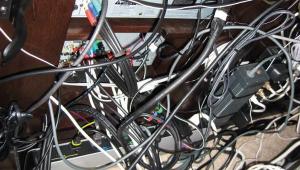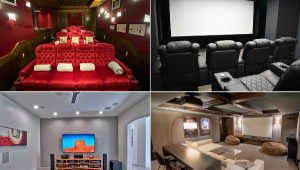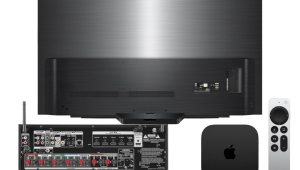Motion Blur, Onkyo Results, Top LED-LCDs

Do you think motion blur on LCD TVs is still a big issue? I just watched Star Trek last night on my new LG 55LH40 and didn't notice any type of blur.
Ashley Hill
Motion blur can still be an issue, but manufacturers have gone to great lengths to reduce the problem. In particular, they have developed a technique called frame interpolation that creates new frames between the actual frames in the signal. The TV calculates where moving objects should be in the new frames, so they look sharper. Many sets double the displayed frame rate from 60Hz to 120Hz, while some quadruple the rate to 240Hz, inserting interpolated frames between the frames in the signal.
However, this process also tends to impart a "video" look to the image, which some people object to more than motion blur. I'm not one of themI prefer less motion blur and don't mind the "video" look.
The 55LH40 is a 120Hz set, so it offers frame interpolation to reduce motion blur. If you haven't adjusted this control, I think it defaults to "on," in which case, motion blur will be reduced.
If you haven't already done so, I suggest that you watch something with fast motion while turning the set's TruMotion control (which controls frame interpolation) on and off. Can you see a difference in sharpness and detail of moving objects between the two settings? Can you see how the image has a "video" look when it's on? Which do you prefer, sharper motion detail or less of a "video" look?
Incredulous
In your review of the Onkyo TX-NR807 AV receiver, which was very positive, you list the following findings:
Five channels driven continuously into 8-ohm loads:
0.1% distortion at 105.5 watts
1% distortion at 122.0 watts
Seven channels driven continuously into 8-ohm loads:
0.1% distortion at 29.9 watts
1% distortion at 33.0 watts
No one on the various forums is questioning the results of the 5-channel test, but the wattage rating for the 7-channel test is so incredible that many are positive it's a misprint. I've been an Onkyo fan for many years and have never seen specs this abysmal for any of its receivers or amps.
Doug Hess
According to Mark Peterson, HT's audio-test engineer, these numbers are correct. He measured the TX-NR807 in exactly the same manner as he does all other AVRs, and these were his results. Odd, I know, but it is not a misprint. Apparently, he and HT editor Shane Buettner are talking with Onkyo about it, but I haven't heard any resolution of the matter. Meanwhile, if you want to know why this particular AVR measured in this way, you'll have to ask Onkyo.
Best LED-LCDs
I am looking for a 46- or 47-inch LCD TV with LED illumination and a matte screen if possible. What are your top two or three recommendations? You reviewed the 55-inch Samsung LCD and liked it a lot, although I am little concerned about off-axis viewing problems.
David Henry
My two top recommendations for you are the Samsung UN46B8500 (older, may be discontinued but still available from some outlets) and the LG 47LE8500 (brand new, review forthcoming). The Samsung is way more expensive than the LG$3600 versus $2800 list, though I suppose you might be able to find the Samsung for less now that it's near the end of its retail cycle. Also, the LG has the most impressive off-axis performance I've ever seen in an LCD TV, and it's screen is more matte than the Samsung's.
Interesting that they both have 8500 in their model number; I have no idea why that might be. Both are great, so you can't go wrong either way.
If you have a home-theater question, please send it to scott.wilkinson@sorc.com.




























































